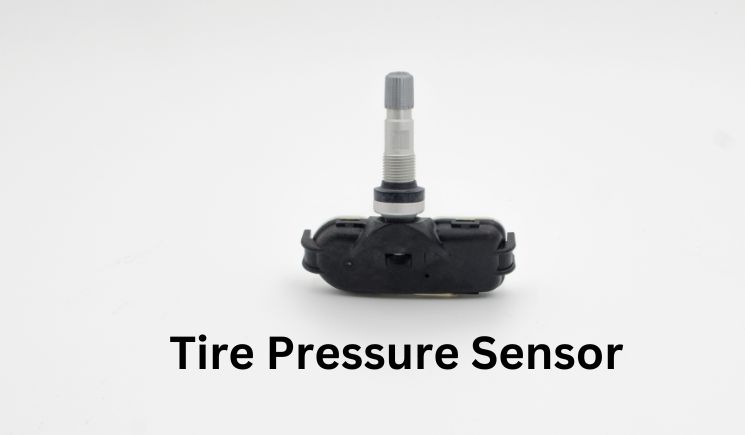Flap Hanging Behind A Rear Tire

Flap hanging behind a rear tire is an issue that many drivers experience, yet few know how to fix it. This article provides information on the causes and solutions for this common problem. By reading through this guide, drivers will be able to quickly identify and resolve any flap issues they may have with their vehicle’s tires.
Flaps are often found dangling from the back of a car due to poor installation or wear-and-tear over time. The flapping can cause significant noise when driving, as well as reduced traction in wet conditions. Additionally, if left unresolved, these flaps can become damaged and can even lead to larger problems down the road. Fortunately, there are ways to solve these issues without having to purchase new tires or hire external help.
Table of Contents
- Causes Of Flap Hanging Behind A Rear Tire
- Signs Of A Loose Or Broken Bolt
- Worn Tires And Flap Hanging
- Solutions To Flap Hanging
- Preventative Maintenance Tips
- Frequently Asked Questions
- What Is The Purpose Of The Flap Hanging Behind The Rear Tire?
- Is It Dangerous To Drive With A Flap Hanging Behind The Rear Tire?
- Are There Any Specific Tools Needed To Repair Flap Hanging?
- Are There Any Other Causes Of Flap Hanging Besides A Loose Or Broken Bolt?
- Are There Any Other Preventative Maintenance Tips To Keep Flap From Hanging?
- Conclusion
Causes Of Flap Hanging Behind A Rear Tire
They say that a stitch in time saves nine, and nowhere is this truer than when it comes to repairing your car. A flap hanging behind a rear tire may look like an unsightly blemish on the vehicle’s exterior, but it can also be an early warning sign of something more serious underneath the surface. As such, taking care of any issues with flaps should always be prioritized for optimal performance and safety on the road.
When it comes to figuring out exactly what’s going wrong, there are two main culprits: loose or broken bolts. Bolts have the job of holding together many different parts around the tires, so if they become compromised due to wear-and-tear then they can cause all sorts of problems – including having one or more flaps dangling from the back end of your ride. To prevent them coming off completely and causing further damage down the line, you need to identify any signs that could indicate that something isn’t right and act accordingly.
To help you do just that, here are some key pointers to watch out for…
Signs Of A Loose Or Broken Bolt
If you find a flap hanging behind one of your rear tires, it is likely caused by either a loose or broken bolt. Before attempting any repairs, it’s important to recognize the signs of each issue and understand what needs to be done to correct them:
- Signs of a Loose Bolt:
- Vehicle may have shaking at higher speeds
- Wheel might make thumping sound when turning corners
- Tire could wobble slightly when driving on uneven surfaces
- Signs of a Broken Bolt:
- Flap will hang lower than usual if broken due to weakened tension
- Excessive vibration felt in vehicle, especially while accelerating
- You may observe metal pieces near tire area where bolt was once attached
Depending on how severe the damage is, you should take your car into an automotive shop as soon as possible for inspection and repair. Without proper attention, worn tires and flap hanging can become dangerous safety hazards that put both drivers and passengers at risk. It’s best to err on the side of caution and get professional help right away. To ensure you’re prepared for potential issues with worn tires and flaps, keep reading for more information about preventive maintenance tips.
Worn Tires And Flap Hanging
Worn tires and flap hanging are a common issue for many drivers. Do worn tires lead to a flap of rubber hanging from the back of your vehicle? Some people believe that this is an inevitable result of tire wear, but there is much more to it than that.
To understand if wearing tires causes a flapping noise coming from the rear wheel, it helps to look at the facts and figures in greater detail. The following table compares several factors associated with worn tires and how they relate to flap hanging:
| Factors | Worn Tires | Flap Hanging |
|---|---|---|
| Age | Older | More likely |
| Type | All-Season | Mostly Passenger Vehicles |
| Location | Outer edge | Rear Tire |
| Alignment | Poor | Yes |
It appears that while all-season tires tend to be older – on average – when flap occurs, it can happen regardless of age or type of tire. What’s more important is the alignment; poor alignment will cause the tread pattern along the outer edge of any tire to separate, which leads to rubber flaps forming on the back tire. This is why passenger vehicles have been found to be most affected by flap hanging compared with other types of vehicles.
Ultimately, although wearing down tires could theoretically contribute towards flap formation, proper maintenance is key in keeping them safe from such issues.
Solutions To Flap Hanging
Solving the issue of a Mud flaps hanging is not hard and can be done with some basic automotive knowledge. The most common cause of this problem is an old or worn out inner tube, which needs replacing to ensure safe driving conditions and minimal noise pollution from flapping tires.
The following steps outline how to replace an inner tube:
- Make sure the wheel rim is clean before installing the new tube
- Unmount the tire from the wheel by loosening any bolts that may be holding it in place
- Carefully remove the old inner tube and discard properly
- Install the new inner tube along with any valve stem parts as necessary
- Re-mount the tire onto the wheel and secure tightly with all appropriate nuts/bolts
Once these steps are completed, you should have successfully replaced your inner tubes. This process will help keep your rear tires secured and eliminate any annoying sounds associated with flapping materials on a vehicle. Now let’s take look at some preventative maintenance tips for keeping this issue from occurring again in future drives.
Preventative Maintenance Tips
Preventative maintenance is key to keep a car in good condition and ensure that the flap hanging behind a rear tire remains secure. Taking proactive steps can help protect against costly repairs down the road. From regular check-ups to routine tune-ups, proper care of your car will save you time and money in the long run.
First off, it’s important to stay aware of any signs of wear or tear on all parts of your vehicle, including the flap hanging behind a rear tire. It’s best practice to inspect components before they become an issue so you won’t be surprised with sudden damage or failure when driving. Additionally, keeping on top of oil changes and other regularly scheduled maintenance tasks helps extend the life of every part of your car.
Finally, investing in quality replacement parts for worn out pieces will guarantee that everything continues performing as expected without sacrificing performance or safety. Don’t skimp on cost when replacing anything related to the flap; using reliable products ensures peace of mind for years ahead. By adhering to these easy tips, drivers can rest assured their cars are in great shape – no matter what lies around the bend!
Frequently Asked Questions
What Is The Purpose Of The Flap Hanging Behind The Rear Tire?
When it comes to your car’s safety and performance, there are certain features that serve an important purpose. One such feature is the flap hanging behind the rear tire. This piece of equipment serves multiple purposes: from reducing drag on the tires for better fuel efficiency, to providing protection against road debris kicked up by the tires. Its aerodynamic shape also helps prevent rocks, dust and other objects from entering into the wheel area. In addition to this, it can help reduce turbulence under the vehicle which makes for a smoother ride overall. Ultimately, it plays an essential role in keeping you safe when out on the road.
Is It Dangerous To Drive With A Flap Hanging Behind The Rear Tire?
Driving with a flap hanging behind your rear tire can be potentially dangerous. Depending on the size and placement of the flap, it could get caught in the wheel-well or cause issues with braking and acceleration due to wind resistance. It’s important to check for any debris that might have become lodged in this area before driving, as well as regularly inspect any attachments you may have made to the back of your vehicle.
Are There Any Specific Tools Needed To Repair Flap Hanging?
Taking care of a flap hanging behind the rear tire is an important part of any vehicle owner’s maintenance routine. But, what tools are necessary to fix it? In most cases, you’ll need some basic car supplies like pliers, wire cutters and needle-nose pliers. Additionally, you may require adhesive tape or zip ties depending on the type of flap that needs repair. As always, if you’re unsure about how to tackle this task yourself then be sure to consult a trained professional for assistance.
Are There Any Other Causes Of Flap Hanging Besides A Loose Or Broken Bolt?
When it comes to flap hanging, the first thing that often comes to mind is a loose or broken bolt. However, there are other causes of this issue as well. Worn rubber seals on doors and windows can allow air to escape, leading to an imbalance in pressure that could cause flapping. Additionally, if the frame around the door or window has become bent out of shape due to an accident or aging car parts, this too can create enough stress for a flap to hang loosely. Ultimately, when it comes to diagnosing and repairing any kind of flap problem, having a good understanding of all potential issues is key.
Are There Any Other Preventative Maintenance Tips To Keep Flap From Hanging?
Owners of vehicles with flaps behind the rear tires should take note: Proper maintenance can go a long way in preventing those pesky flaps from hanging. Regularly checking for loose or broken bolts is just one step to ensure that your car’s flaps stay securely attached, but there are additional preventative measures you can take. Make sure all parts and fasteners around the flap are properly tightened, and inspect regularly for signs of damage or wear that could lead to detachment. Ensuring these components remain secure will help keep your vehicle safe on the road.
Conclusion
A loose or broken bolt is the most common cause of a flap hanging, but it isn’t the only one. It’s important to take preventative measures when caring for your vehicle in order to avoid this issue from arising. Regularly checking and replacing worn bolts can help keep flaps secure, as well as inspecting tires for any signs of damage.
Ultimately, having a flap hang behind a rear tire can be dangerous if not addressed quickly. Making sure you’re up-to-date on regular maintenance checks will ensure that your car remains safe and reliable. So don’t hesitate – get out there and show those pesky flaps who’s boss!






